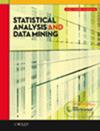Density estimation via measure transport: Outlook for applications in the biological sciences
IF 2.1
4区 数学
Q3 COMPUTER SCIENCE, ARTIFICIAL INTELLIGENCE
引用次数: 0
Abstract
One among several advantages of measure transport methods is that they allow or a unified framework for processing and analysis of data distributed according to a wide class of probability measures. Within this context, we present results from computational studies aimed at assessing the potential of measure transport techniques, specifically, the use of triangular transport maps, as part of a workflow intended to support research in the biological sciences. Scenarios characterized by the availability of limited amount of sample data, which are common in domains such as radiation biology, are of particular interest. We find that when estimating a distribution density function given limited amount of sample data, adaptive transport maps are advantageous. In particular, statistics gathered from computing series of adaptive transport maps, trained on a series of randomly chosen subsets of the set of available data samples, leads to uncovering information hidden in the data. As a result, in the radiation biology application considered here, this approach provides a tool for generating hypotheses about gene relationships and their dynamics under radiation exposure.通过测量传输进行密度估算:生物科学应用前景
度量传输方法有几个优点,其中之一是它们可以提供一个统一的框架,用于处理和分析根据多种概率度量分布的数据。在此背景下,我们介绍了计算研究的结果,这些研究旨在评估度量传输技术的潜力,特别是三角传输图的使用,它是旨在支持生物科学研究的工作流程的一部分。辐射生物学等领域中常见的样本数据量有限的情况尤其引人关注。我们发现,在利用有限的样本数据估计分布密度函数时,自适应传输图具有优势。特别是,通过计算一系列自适应传输图(在一系列随机选择的可用数据样本集子集上进行训练)收集到的统计数据,可以揭示隐藏在数据中的信息。因此,在本文所考虑的辐射生物学应用中,这种方法提供了一种工具,用于生成关于基因关系及其在辐射照射下动态变化的假设。
本文章由计算机程序翻译,如有差异,请以英文原文为准。
求助全文
约1分钟内获得全文
求助全文
来源期刊

Statistical Analysis and Data Mining
COMPUTER SCIENCE, ARTIFICIAL INTELLIGENCEC-COMPUTER SCIENCE, INTERDISCIPLINARY APPLICATIONS
CiteScore
3.20
自引率
7.70%
发文量
43
期刊介绍:
Statistical Analysis and Data Mining addresses the broad area of data analysis, including statistical approaches, machine learning, data mining, and applications. Topics include statistical and computational approaches for analyzing massive and complex datasets, novel statistical and/or machine learning methods and theory, and state-of-the-art applications with high impact. Of special interest are articles that describe innovative analytical techniques, and discuss their application to real problems, in such a way that they are accessible and beneficial to domain experts across science, engineering, and commerce.
The focus of the journal is on papers which satisfy one or more of the following criteria:
Solve data analysis problems associated with massive, complex datasets
Develop innovative statistical approaches, machine learning algorithms, or methods integrating ideas across disciplines, e.g., statistics, computer science, electrical engineering, operation research.
Formulate and solve high-impact real-world problems which challenge existing paradigms via new statistical and/or computational models
Provide survey to prominent research topics.
 求助内容:
求助内容: 应助结果提醒方式:
应助结果提醒方式:


